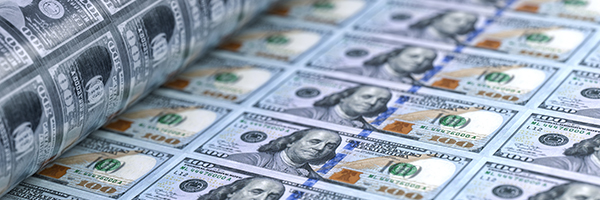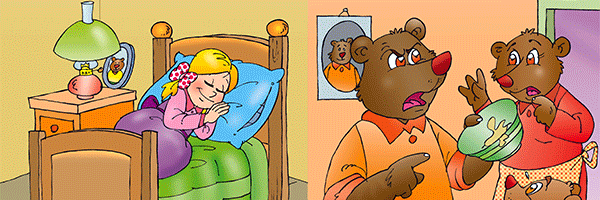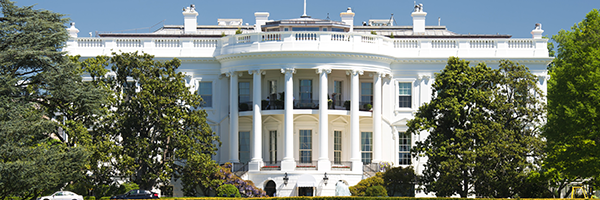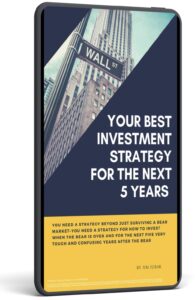
May 3, 2025 | Daily JAM |
I don’t expect the Wedneday, May 7, meeting of the Federal Reserve to produce no action on cutting interest rates, but intense scrutiny of the Fed’s words as investors search for clues on when the central bank will go into full rate-cuttinging mode.

April 30, 2025 | Daily JAM |
Seems like we’re back again to a world where all the bad news is good news.

April 25, 2025 | Daily JAM, Morning Briefing |
The S&P 500 gained more than 4% for this week. Some of that was the result of talk from the White House about possible tariff negotiations with China.As the week wore on, though, attention shifted from tariff talk to comments from Federal Reserve officials that seemed to suggest that the central bank might consider cutting interest rates as early as its June meeting if economic growth slowed. Yep, the Powell Put is back. In this scenario, bad earnings and bad economic news become good news because they push the Federal Reserve closer to cutting interest rates.

April 17, 2025 | Daily JAM, Morning Briefing, Short Term |
One day after Fed Chair Jerome Powell warned that the administration’s trade war was “highly likely” to spur a temporary rise in inflation with the potential for longer-lasting effects President Donald Trump blasted the Federal Reserve for not lowering interest rates and said its chair’s “termination cannot come fast enough.” “Jerome Powell of the Fed, who is always TOO LATE AND WRONG, yesterday issued a report which was another, and typical, complete ‘mess!’” Trump wrote on Truth Social. Referring to interest rates, he added: “He should certainly lower them now. Powell’s termination cannot come fast enough!”

April 14, 2025 | Daily JAM, Special Reports |
Is it time to get in, to snap up bargains, before stock prices recover. To which I say, Not yet. Bear markets, and remember that we’re now in a Bear market, are notorious for setting bear traps for investors who get carried away at the prospect of heady profits from buying on the dip. Bear market traps dangle just enough of a juicy bounce in front of hungry investors to get them to put cash into stocks–and then spring the trap of eating that cash all up in a renewed downturn. So when should you think about getting in? Almost no one ever gets a bottom absolutely right. But you do want to be relatively correct on finding the bottom and to avoid, to the degree you can, the losses from a Bear trap. I’m really reluctant to use past drops and Bear markets as a pattern for this moment. John Auther had a good post on Bloomberg on April 8 on how the drop and then the bounce resembled the market meltdown of 2008. The massive selling and then recovery reminds him of big selling in after the Lehman debacle in October 2008 that marked what calls hevthe end of the beginning in that bear. The actual bottom, he notes, came five months later. The difference this time, I’d say, is that we still haven’t seen the end of the potential stream of bad news. We still have to hear about recession/no recession, more Trump tariffs, spike in inflation/no spike, trade war retaliation, and more. We could get bad news, even really surprising bad news, on any of these fronts that would lead to another leg down in the financial markets. In other words, real world evnts that have yet to be decided could mean we’re closer to or further away from a bottom to this Bear market.

April 9, 2025 | Daily JAM |
Today’s U.S. Treasury auction of $39 billion in 10-year notes went better than expected despite recent volatility in the bond market. That lessened my worry about a potential tightening of liquidity in the critical Treasury market.

April 2, 2025 | Daily JAM, Videos |
Today’s video is Why the Fed is Almost Certain to be Wrong. Blame it in lags. Lags make economic forecasting really difficult at the best of times. How long does it take policies like tariffs and tax cuts to actually affect the economy and show up in the data? Right now, we’re dealing with lags from a tariffs that will eventually raise consumer prices. We don’t know when this will hit people in the wallet and really start to affect the economy as a whole. Another problem is the upcoming Trump tax cuts. This will be stimulative to the economy and the Fed may have to look at raising rates again in effort to slow more inflation. If, however, the tariffs slow the economy enough to balance out the stimulative effect of the tax cuts, the Fed would look at lowering rates. There’s really little that monetary policy can do about tariff-caused price increases. White House accounting says the tariffs and tax cuts will balance each other, but it’s tough to say if the money coming out of consumer pockets are the same pockets benefiting from the tax cuts. All this to say, the Fed remains between a rock and a hard place, and has little chance of getting this right and will almost certaInly make a mistake. The question is, How big will the mistake be?

March 28, 2025 | Daily JAM, Morning Briefing |
The Federal Reserve’s preferred inflation measure rose in February at a faster pace than in January. The rate of increase was also greater than economists had expected

March 20, 2025 | Daily JAM, Morning Briefing |
That didn’t take long. Wednesday afternoon the Federal Reserve decided to keep its benchmark interest rate steady–no rate cut. Wednesday night President Donald Trump renewed his call for the Federal Reserve to lower interest rates as he criticized the central bank’s decision. “The Fed would be MUCH better off CUTTING RATES as U.S.Tariffs start to transition (ease!) their way into the economy,” Trump wrote on Truth Social. “Do the right thing.” Trump added: “April 2nd is Liberation Day in America!!!” President Trump’s criticism of the Fed’s decision certainly isn’t a surprise.

March 15, 2025 | Daily JAM |
I expect less drama than markets now fear from Wednesday’s meeting of the Federal Reserve’s interest-rate-setting Open Market Committee.

March 7, 2025 | Daily JAM |
Just minutes after a slide that drove the S&P 500 down over 1%, the gauge staged an “oversold bounce” after Federal Reserve Chair Jerome Powell told a New York audience that the economy is fine. “Despite elevated levels of uncertainty, the US economy continues to be in a good place,” Powell said at an event Friday in New York hosted by the University of Chicago Booth School of Business. “We do not need to be in a hurry, and are well positioned to wait for greater clarity.”

March 1, 2025 | Daily JAM |
I see the beginning of two weeks of extraordinary volatility. Look what’s on deck.











